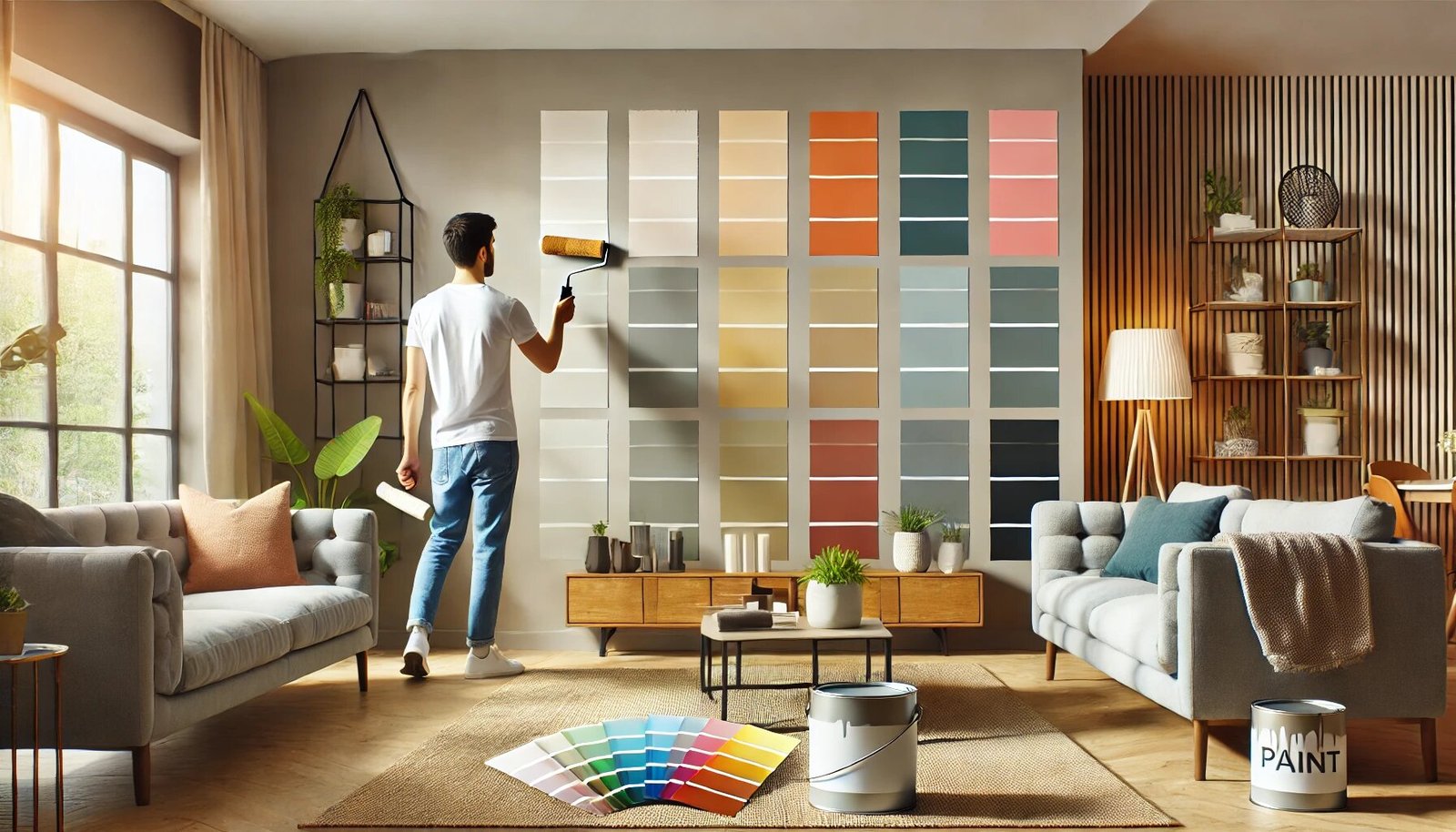Choosing the right paint for your living room can transform the space, but the decision can sometimes feel overwhelming. With an array of colors to choose from, how can you be sure you’re picking the right one? Testing paint colors before making a final decision is crucial to ensure the shade works well with your living room’s lighting, furnishings, and overall ambiance. Here’s a comprehensive guide on how to test paint for living room colors effectively, featuring high-quality options from Reliable Paints.
Step 1: Understand Your Space
Before you start testing paint colors, consider the specific characteristics of your living room. How much natural light does it get? What are the sizes and colors of your furniture and decorations? These factors can significantly influence how a paint color looks in your space.
Step 2: Choose a Variety of Samples
When you visit Reliable Paints, choose multiple paint samples that catch your eye. It’s important to have options, as colors can look quite different in your living room than they do in a store or on a screen.
Step 3: Use Paint Swatches
Start by placing paint swatches against your living room walls. Swatches are a low-commitment way to see how a color looks throughout the day as natural light changes. Observe how each color interacts with the room’s elements and lighting.
Step 4: Invest in Sample Pots
For a more accurate test, purchase small sample pots of your selected colors. Reliable Paints offers sample sizes that are perfect for this purpose. Paint large patches on the walls, or paint onto large sheets of white cardboard that you can move around the room at different times of day.
Step 5: Live with the Color
Allow the test patches to dry completely, and live with them for a few days. This will give you the chance to see how you feel about the colors at different times of day and under various lighting conditions, such as natural daylight and artificial light at night.
Step 6: Consider the Finish
Remember that the finish of the paint can affect the color’s appearance. Matt, gloss, and satin finishes can look noticeably different, so consider the type of finish you intend to use for your living room.
Step 7: Check Compatibility
Look at how the paint colors you’re testing match with key elements of the room like curtains, carpets, artwork, and furniture. This compatibility is crucial for a harmonious design.
Step 8: Get Feedback
Sometimes, a second opinion can help. Invite a friend or family member to view the color samples in your living room. They may notice aspects of the color that you didn’t.
Step 9: Final Evaluation
After testing the colors for a few days, assess which one best suits your living room in terms of aesthetics, mood, and functionality. The color that looks best across various conditions and matches well with your living room’s decor should be your top choice.
Factor in Your Lifestyle and Preferences
Your living room is a central hub of activity, whether it’s for hosting guests, relaxing with family, or enjoying a quiet evening alone. The paint color you choose should reflect not just the aesthetics but also the functionality required by your lifestyle. For instance, darker colors might be better suited for a media room where you watch movies, whereas lighter colors could enhance the brightness and energy of a room used primarily during the day. Consider how the color will affect the mood and utility of the space.
Understand Color Psychology
Colors have a profound impact on our emotions and behavior, making it important to understand color psychology when choosing your living room paint. For example, blues and greens are calming and might be perfect for a relaxing environment, while vibrant colors like yellow or orange can energize a space and stimulate social interactions. When testing colors, think about the emotional effect you want to achieve in your living room and choose shades that help manifest this atmosphere.
Consider Trends but Prioritize Timelessness
While it’s tempting to choose the latest trendy color for your living room, it’s essential to consider whether the color will still appeal to you in the years to come. Trends can be a great source of inspiration, but selecting a color that matches your personal style and the architectural style of your home will likely satisfy you longer. However, if you love keeping up with trends, consider incorporating trendy colors through accents that can be easily updated, such as cushions, throws, or artwork.
Take Advantage of Technology
Many paint companies now offer digital tools that allow you to visualize different paint colors in your space virtually. Tools like these can be incredibly helpful in narrowing down your choices before you even buy sample pots. Upload photos of your living room to Reliable Paints’ website and experiment with various colors to get a preliminary sense of how they might look. This can save time and money, helping you to focus on colors that truly enhance your space when you test them in person.
Wrapping Up
Remember, the color of your living room walls can significantly influence not only the aesthetics of the space but also its perceived size and warmth. It sets the tone for the entire home. Taking the time to test paint colors thoroughly, considering your lifestyle, and understanding the psychological effects of your choices will lead you to a color that not only looks great but also creates the right mood for your home’s most communal space. With Reliable Paints, you have access to a spectrum of quality options that will help bring your vision for your living room to life.








Leave a Reply